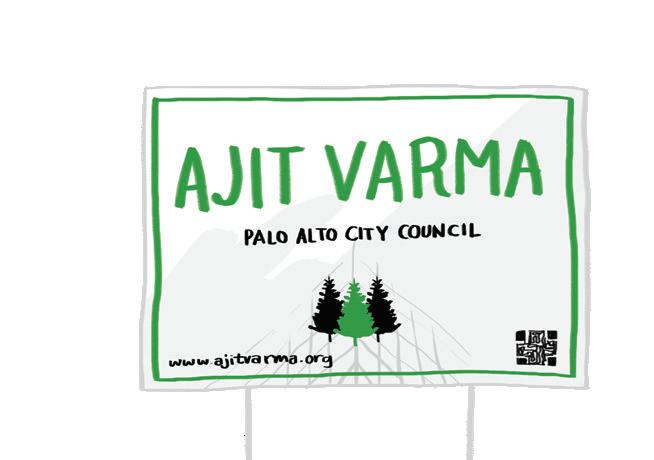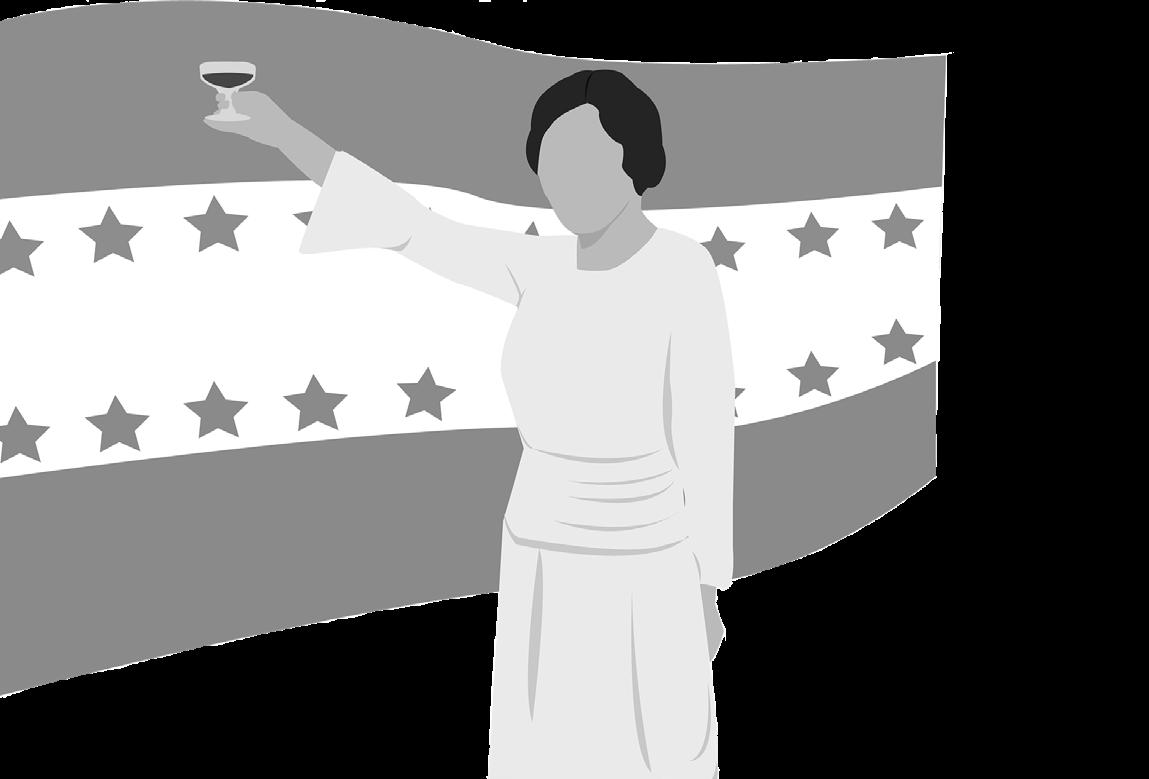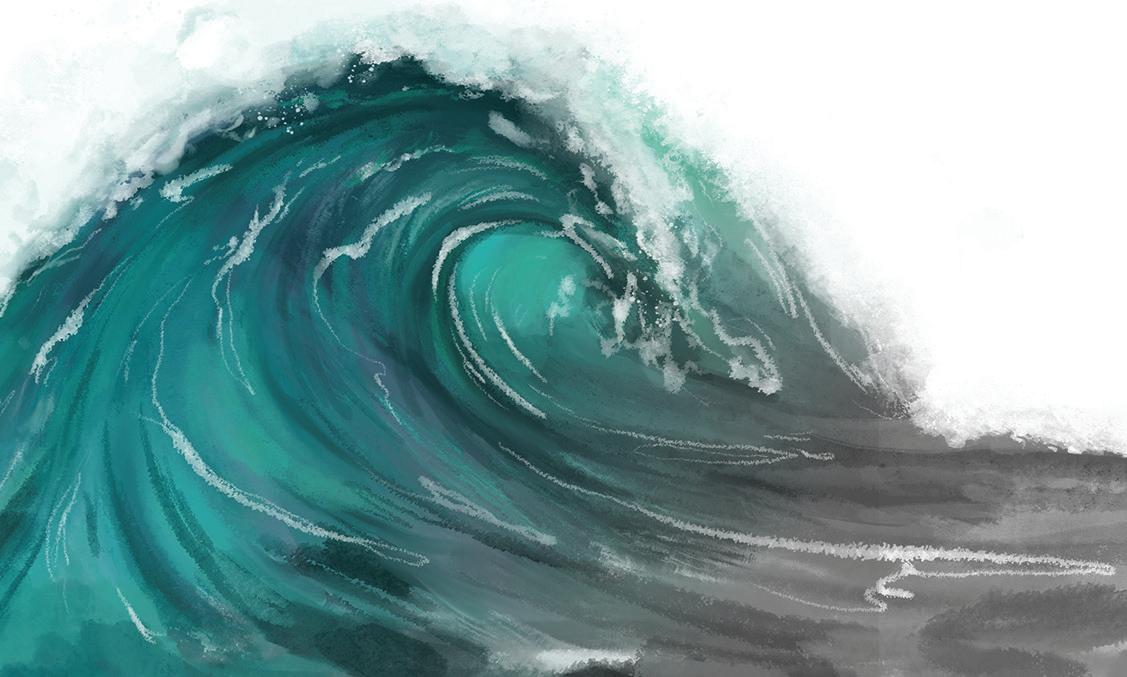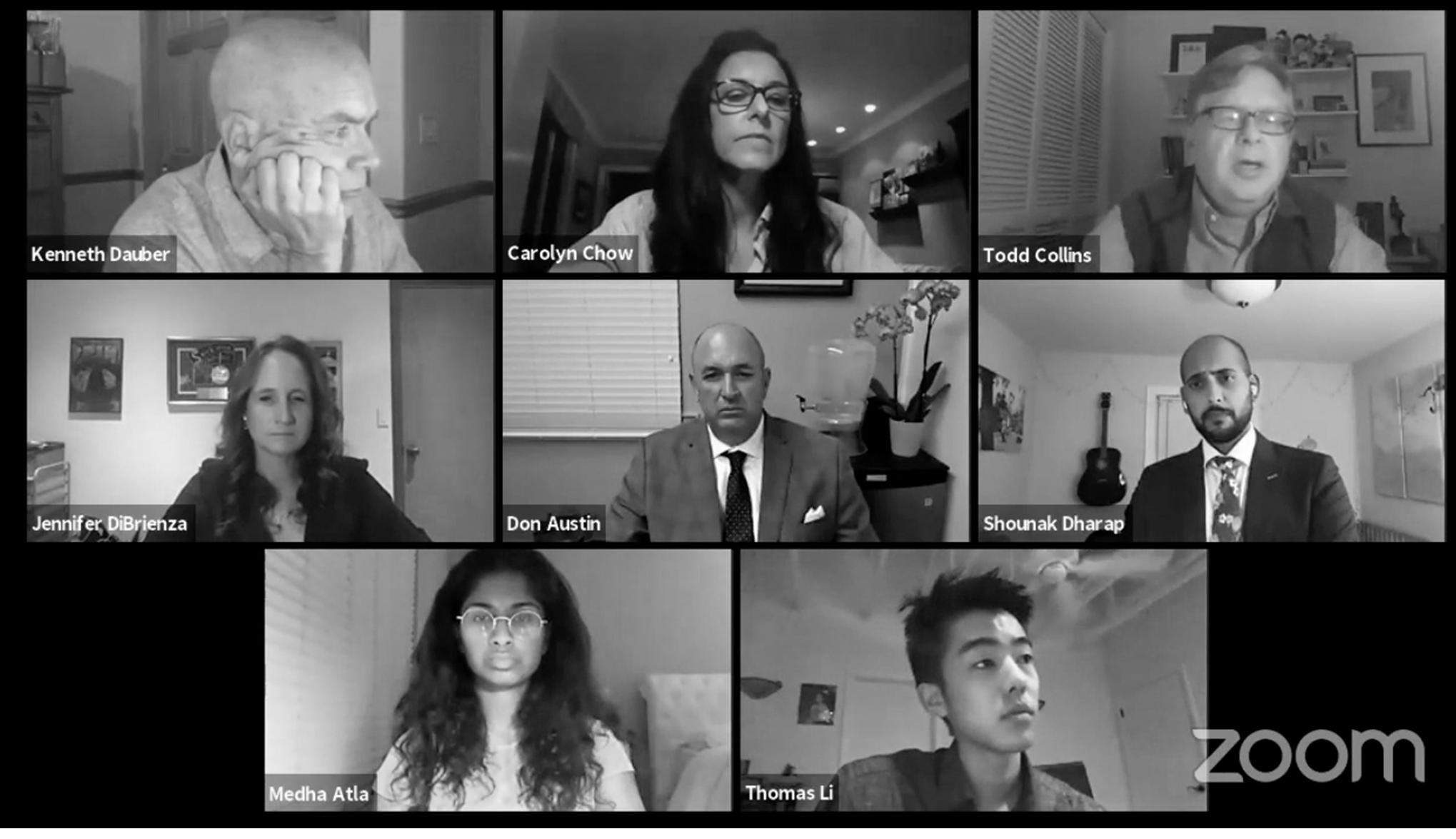ADAPTING CLASSES FIND NEW WAYS TO CREATE
T
HIRTY STUDENTS’ FACES completed masterpiece comes into view. pop up on a black screen, each This year, visual art classes mostly operate in their respective rooms with the same way, only with a more hands-off an instrument in hand. After a approach. Students generally check into moment filled with the plucking of strings Zoom for attendance and then sign off to to find starting notes, and the sound of air work on their projects, whether it be on conditioners and passing cars, the angel- kitchen tables, converted desks or outdoor ic “Somewhere Over the Rainbow” floats work stations. Compare this with the colthrough the speakers. This is Palo Alto orful crowd that once filled the art rooms, High School’s “Spring ‘Virtual’ Concert and it’s definitely a different atmosphere. and Senior Celebration 2020,” and perhaps Junior April Wu, who is currently takwhat most performances will look like in ing AP Studio Art 2D Design, misses the the school year. frequent progress check-ins with her teachAcross all departments, COVID-19 er but finds that the new format has providand the resulting campus closure have ed her with other opportunities. caused extreme shifts “It’s kind of nice in the student exhaving freedom in a perience. However, It’s kind of nice having way, because then I can few classes have been freedom in a way, bekind of do things my hit as hard as the own way and see where Visual and Perform- cause then I can kind I would go without ing Arts programs. of do things my own supervision,” Wu said. Classes like theater, “It’s more of an exploband and sculpture way and see where I ration kind of thing.” rely on a close sense would go without suSubjects such as of community, along ceramics, painting and with materials and pervision.” glassblowing heavily equipment provided rely on physical ma— APRIL WU, junior by Paly. Despite these terials and tools, as difficulties, VAPA well as an appropriate teachers and students are determined to workspace. Yet with supply cabinets locked make this year valuable. up and classrooms collecting dust, teachers “We just made a decision this year that and students are searching for creative al[no matter what], no way we were not go- ternatives. ing to teach,” said Kate McKenzie, the AdTake, for example, Paly’s celebrated vanced Painting & Drawing and AP Studio glassblowing program, which has been disArt 2D Drawing & Design teacher. continued while students remain at home. To carry on their craft, according to senior The visual arts vision Andrew Guillet, some glassblowers go to The whisk of a brush. A finishing Public Glass, a glassblowing studio in San touch. Stepping away from the canvas, the Francisco. However, the commute and re-
“
20 OCTOBER 2020
strictive time slots make the process inconvenient and less enjoyable. Despite these immediate challenges that come with online learning, some unexpected and interesting changes have surfaced. To McKenzie, recent student work has gained a new depth due to newfound struggles and stories. “The work that I saw coming in was so emotional and so strong,” McKenzie said. “That does come out in really powerful ways in art that I don’t get in the classroom.” Straying from the stage A final sob. Thunderous applause. With a bow, the curtains close on another successful show. Students, staff and families have long enjoyed numerous onstage performances, ranging from the serious “Tartuffe” to the silly “The 25th Annual Putnam County Spelling Bee.” Due to distance learning, however, Paly’s plays and theater classes have changed dramatically. Theater students are currently focusing on voice work, which includes creating character voices, dialects and accents — skills that can be easily developed over Zoom. It’s also less challenging to learn about history and playwriting when computers — which usually aren’t available in theater rooms — are guaranteed in front of every student, according to Sarah Thermond, the Theater and Stage Technologies and Design teacher. However, as senior Kristen Liu puts it, theater is an art that relies on physical interaction, so the in-person experience is almost impossible to emulate. “It’s so weird because we’re not standing up and seeing each other, we’re just sit-




















